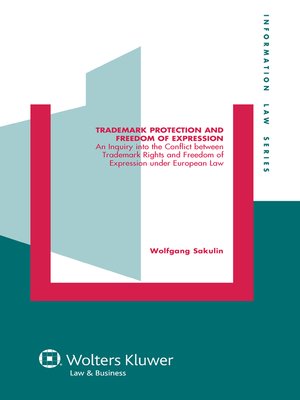Trademark Protection and Freedom of Expression
ebook ∣ An Injuiry into the Conflict between Trademark Rights and Freedom of Expression under European Law
By Wolfganng Sakulin

Sign up to save your library
With an OverDrive account, you can save your favorite libraries for at-a-glance information about availability. Find out more about OverDrive accounts.
Find this title in Libby, the library reading app by OverDrive.



Search for a digital library with this title
Title found at these libraries:
| Library Name | Distance |
|---|---|
| Loading... |
Trademark law grants right holders an exclusive right to prevent third parties from using a sign. This can readily be seen as the antithesis of freedom of expression, which arguably includes a right of third parties to non-exclusive use of a sign for a variety of purposes, ranging from informing consumers, to voicing criticism or to artistic expression. Drawing on cultural theory – which has shown that society is involved in a constant struggle about shaping the meaning of signs (including trademarks) – this highly original and provocative book contends that trademark law fails to sufficiently differentiate between commercial purpose and the social, political, or cultural meanings carried by one and the same sign.
The author shows that the 'functional approach' to justifying trademark rights taken in current jurisprudence and doctrine is deficient, in that it does not take sufficient account of the fact that trademark rights can restrict the freedom of expression of third parties. Specifically, the exercise of rights granted under the European Trademark Regulation and the national trademark rights harmonized by the European Trademark Directive can cause a disproportionate impairment of the freedom of commercial and non-commercial expression of third parties as protected by Article 10 of the European Convention on Human Rights (ECHR).
The author's in-depth analysis explores such elements as the following:
In effect, the analysis serves to expand the focus of legislators, courts, and trademark registering authorities from the interests of trademark right holders, who seemingly are granted ever more protection, to the justified interests of third parties. The critical analysis of existing trademark law leads the author to clearly identify the areas of trademark law in which the law needs to be reinterpreted and the areas in which legislative action should be taken, with recommendations for a number of limitations that should aid legislators in drafting concrete amendments. The new insights and imperatives provided by this book are sure to prove useful to both courts interpreting existing provisions of trademark laws and to legislators who are faced with the challenges of drafting new rules or revising existing laws.







